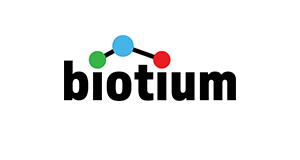CD7 (T-Cell Leukemia Marker)(HuLy-m2), CF740 conjugate, 0.1mg/mL
CD7 (T-Cell Leukemia Marker)(HuLy-m2), CF740 conjugate, 0.1mg/mL
SKU
BTMBNC741252-100
Packaging Unit
100 uL
Manufacturer
Biotium
Availability:
loading...
Price is loading...
Description: Recognizes a protein of 40 kDa, identified as CD7 (Workshop IV; Code T165). CD7 is a member of the immunoglobulin gene superfamily. Its N-terminal amino acids 1-107 are highly homologous to Ig kappa-L chains whereas the carboxyl-terminal region of the extracellular domain is proline-rich and has been postulated to form a stalk from which the Ig domain projects. CD7 is expressed on the majority of immature and mature T-lymphocytes, and T cell leukemia. It is also found on natural killer cells, a small subpopulation of normal B cells and on malignant B cells. Cross-linking surface CD7 positively modulates T cell and NK cell activity as measured by calcium fluxes, expression of adhesion molecules, cytokine secretion and proliferation. CD7 associates directly with phosphoinositol 3'-kinase. CD7 ligation induces production of D-3 phosphoinositides and tyrosine phosphorylation.
Product Origin: Animal - Mus musculus (mouse), Bos taurus (bovine)
Conjugate: CF740
Concentration: 0.1 mg/mL
Storage buffer: PBS, 0.1% rBSA, 0.05% azide
Clone: HuLy-m2
Immunogen: Human thymocytes
Antibody Reactivity: CD7
References: Note: References for this clone sold by other suppliers may be listed for expected applications.
Entrez Gene ID: 924
Expected AB Applications: IF (published for clone)
Z-Antibody Applications: IF (published)
Antibody Application Notes: Higher concentration may be required for direct detection using primary antibody conjugates than for indirect detection with secondary antibody/Flow cytometry: 0.5-1 ug/million cells/Immunofluorescence: 0.5-1 ug/mL/Optimal dilution for a specific application should be determined by user
Product Origin: Animal - Mus musculus (mouse), Bos taurus (bovine)
Conjugate: CF740
Concentration: 0.1 mg/mL
Storage buffer: PBS, 0.1% rBSA, 0.05% azide
Clone: HuLy-m2
Immunogen: Human thymocytes
Antibody Reactivity: CD7
References: Note: References for this clone sold by other suppliers may be listed for expected applications.
- Transplantation 1984, 38(2):143-147.
- J Histochem Cytochem (1985) 33(12): 1183-1189. (IF)
Entrez Gene ID: 924
Expected AB Applications: IF (published for clone)
Z-Antibody Applications: IF (published)
Antibody Application Notes: Higher concentration may be required for direct detection using primary antibody conjugates than for indirect detection with secondary antibody/Flow cytometry: 0.5-1 ug/million cells/Immunofluorescence: 0.5-1 ug/mL/Optimal dilution for a specific application should be determined by user
| SKU | BTMBNC741252-100 |
|---|---|
| Manufacturer | Biotium |
| Manufacturer SKU | BNC741252-100 |
| Package Unit | 100 uL |
| Quantity Unit | STK |
| Reactivity | Human |
| Clonality | Monoclonal |
| Application | Immunofluorescence |
| Isotype | IgG2a kappa |
| Host | Mouse |
| Conjugate | Conjugated, CF740 |
| Product information (PDF) | Download |
| MSDS (PDF) | Download |

 Deutsch
Deutsch







